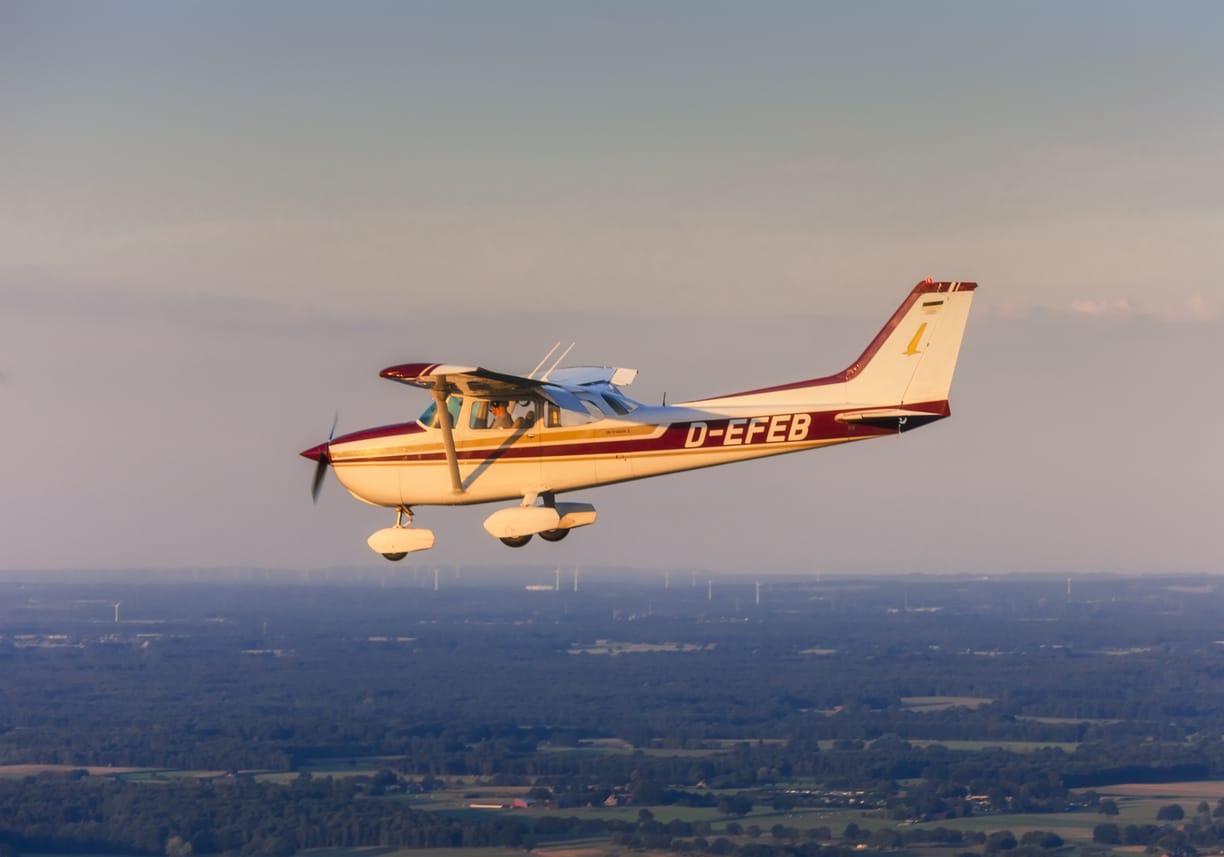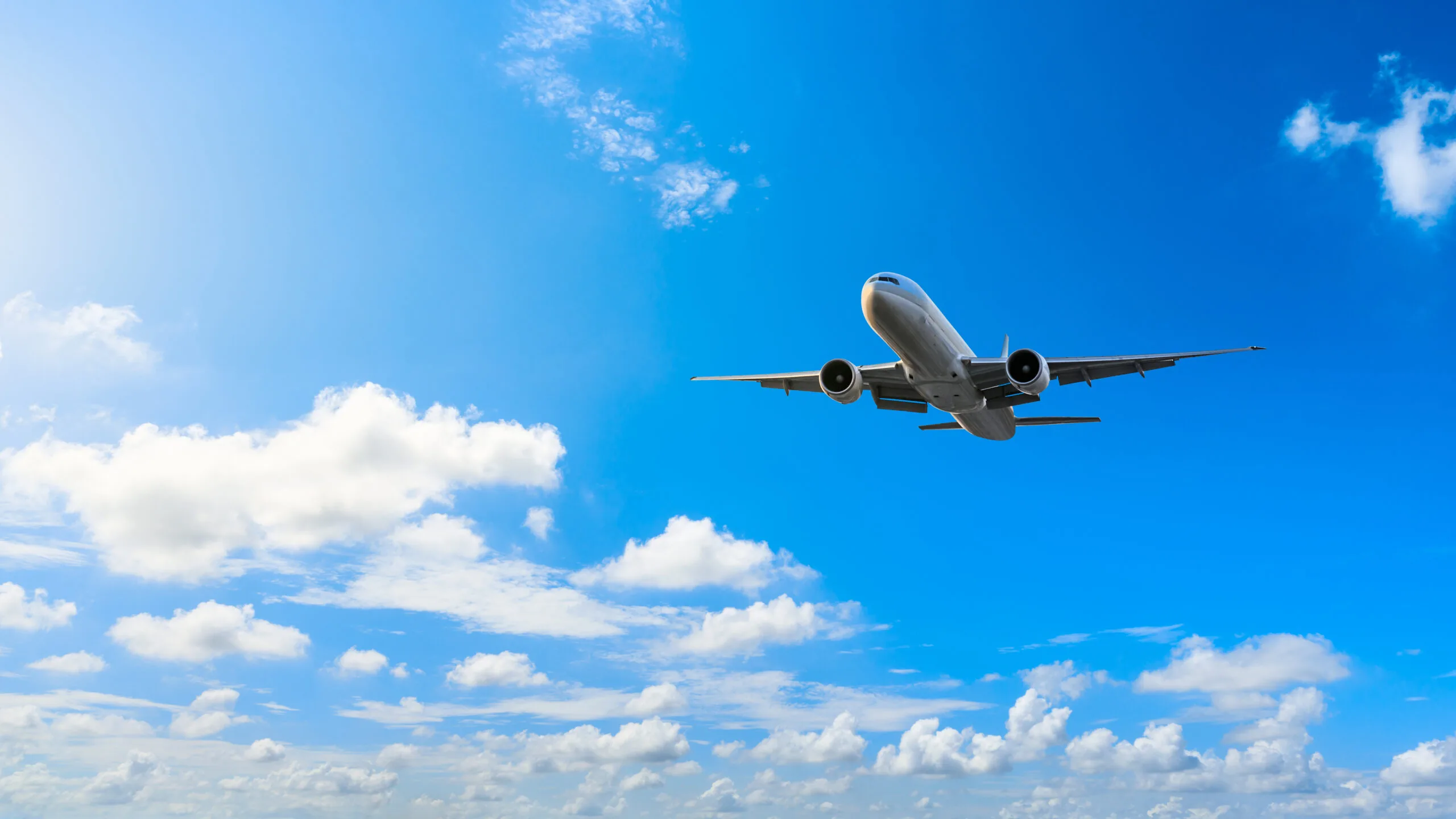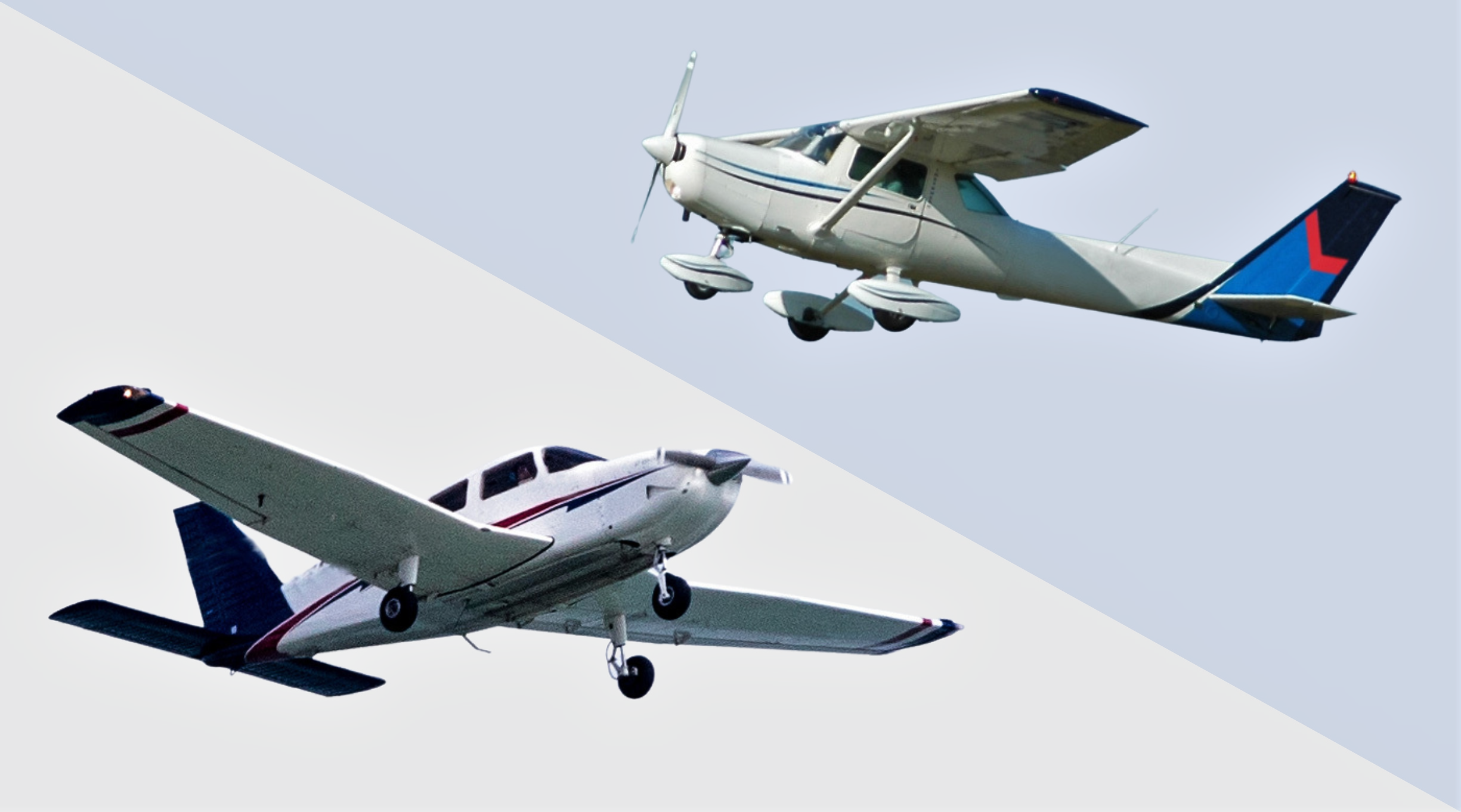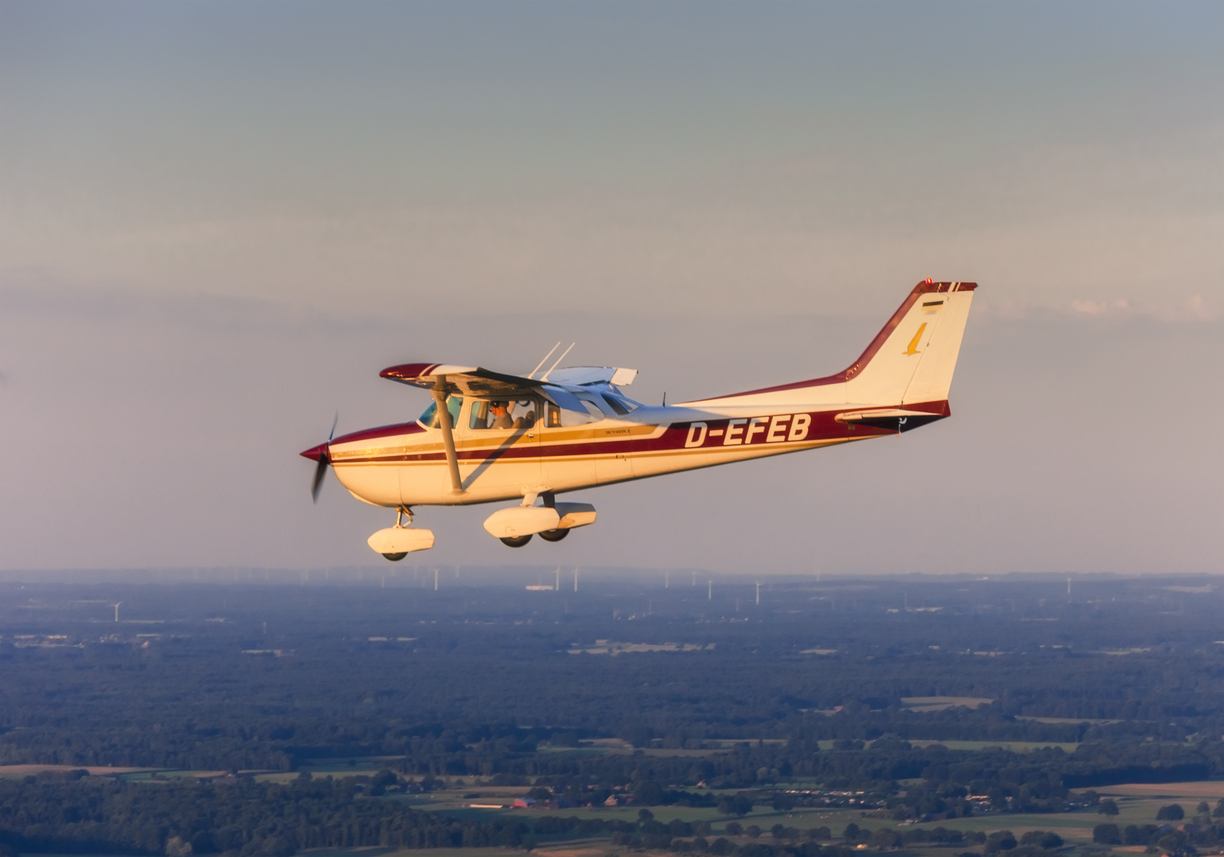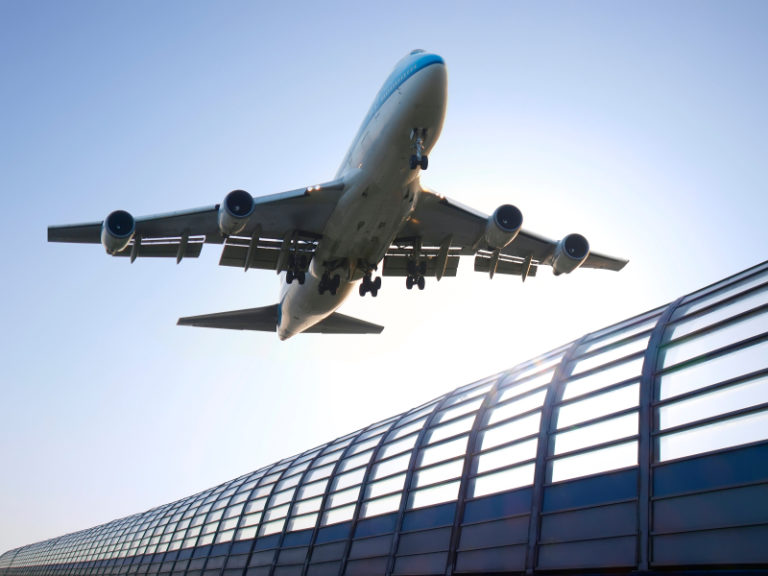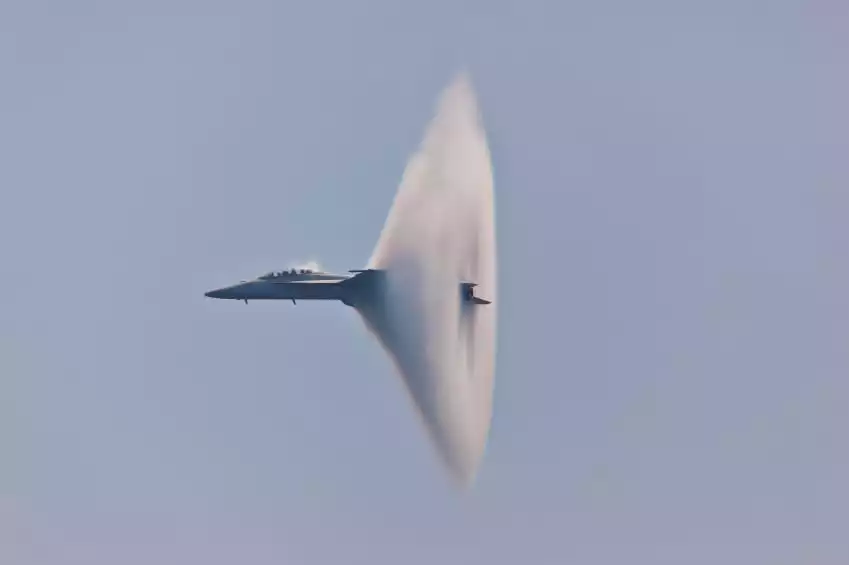The Cessna 172, called the Skyhawk, is by far the most common training aircraft at flight schools in the US. A well-balanced airplane with qualities that translate well to other aircraft, it’s a solid choice for student pilots. Several factors have contributed to the popularity of this stable and reliable flying machine.
The Skyhawk: Most Produced Aircraft Ever
The Cessna 172 holds the title of “Most Produced Aircraft Ever,” with over 44,000 airframes built since 1955. The other most common training airplane, the Piper PA-28 series, is a distant second at 32,000, and the Skyhawk’s little sisters, the 150 and 152 Commuter two-seaters, come in at 31,500 combined. The Skyhawk’s big sister, the 182 Skylane, sits in fourth at 23,000. So what is it about Cessna that gives the manufacturer three of the top four training airplane types in the US?
One reason has partly to do with smart marketing, as back in the 1950s Cessna went on an inspiring advertising blitz to sell its airplanes to the general public instead of only to people who already had an aviation connection. Cessna even partnered with Hertz to offer airplane rentals across the country just like car rentals. That partnership soon dissolved, but it didn’t stop the Skyhawk and her sisters from becoming quite popular. The reason was the design and engineering shared by all three models and the 172 in particular.
History of Early Cessnas
Early Cessnas took lessons from wartime aircraft and helped to innovative general aviation. Up until the 1950s, most airplanes were equipped with conventional landing gear, with the main wheels up front and a tailwheel in the back. That arrangement made landing the airplane rather challenging, and a lot of student pilots would quit out of frustration when learning to land.
Cessna engineers took the successful model 170 airframe and mated it with the tricycle landing gear pioneered by the B-24, B-25, and B-26 bombers from World War Two. The tricycle gear features a nosewheel in the front, and the main wheels moved aft, and is much easier to land as evidenced by the WWII bombers. The reason for the easier landings is a tricycle gear aircraft’s center of gravity (CG) sits in front of the main wheels. That means even if the airplane lands crooked, its weight will pull the airplane straight, as opposed to a conventional landing gear, with the center of gravity aft of the main wheels, will push the airplane even more crooked.
Making Learning to Fly Easier
A tricycle gear-equipped small airplane suddenly made learning to fly so much easier, and Cessna became the craft of choice for many flight schools. The 172, later named the Skyhawk, was the perfect blend of docile handling characteristics for training needs, yet enough seats for the average family of four to use it for personal transportation. In some senses, it was thought to be “the station wagon of the future”; some hoped that airplanes would become as ubiquitous as cars for families.
Cessna also developed the 150 and 152 as two-seat versions of the Skyhawk, mainly intended for flight training, and also for those people who didn’t need to carry a family for transportation. This version became known as the Commuter. The 182 Skylane is a beefed-up 172, meant more for carrying four adults on a business trip rather than a family on a vacation. The higher horsepower and heavier controls of the 182 make it not quite as popular as the 172 is with flight schools and aircraft rental companies. The 182 is not quite as popular amongst student pilots.
Design and Other Features
Another feature of the Cessna line which makes them so popular is the high-wing design, with the wings placed on top of the fuselage instead of under it, like on Pipers. With the wings above, entry into and exit from the cockpit is much easier than having to climb up onto the wing. Also, the doors can be bigger, further aiding egress.
In addition, the bigger doors also mean bigger windows, increasing visibility. In fact, starting with the 172D in 1963, Cessna added a rear window and called it “Omni-Vision”, a big marketing coup over Piper, which to this day does not make airplanes with rear windows.
Speaking of visibility, an advantage of the high-wing design over low-wing is greatly increased visibility looking downward. Part of the magic and joy of flying is seeing the world from a vantage point few people can experience. A high-wing airplane offers views a low-wing simply can’t because the Cessna’s wings are not blocking half the scenery. The bigger windows of the Cessna are just icing on the cake.
Back to the docile handling characteristics of the Skyhawk, that is the number one reason for its popularity. Small airplanes prior to the ‘50s were hard to control and remarkably unstable. The 172’s designers made its flight controls with just enough authority to make the airplane responsive, yet not so sensitive that a student pilot couldn’t handle it. The engineers also found the perfect balance of stability versus speed, which is always a tradeoff in airplane construction. They managed to build an airplane with good stability for training purposes, yet fast enough to be used for efficient transportation.
A flight school’s favorite ability of the Skyhawk, and Cessnas in general is it can recover from a spin on its own, a testament to its stability. Flight instructors in Cessnas tell their students that if the students find themselves inadvertently in a spin and they forget what to do, simply let go of the controls and calmly count to three. That is all the time needed for the built-in aerodynamic stability to take effect and bring the airplane to straight and level.
When training in a Cessna, you are participating in a significant part of aviation history. The skills you learn in this stable aircraft will assist you as you move on to airplanes which are more automated, larger, and more difficult to control.
Ready to soar in your aviation career?
Mr. Matthew A. Johnston has over 23 years of experience serving various roles in education and is currently serving as the President of California Aeronautical University. He maintains memberships and is a supporting participant with several aviation promoting and advocacy associations including University Aviation Association (UAA), Regional Airline Association (RAA), AOPA, NBAA, and EAA with the Young Eagles program. He is proud of his collaboration with airlines, aviation businesses and individual aviation professionals who are working with him to develop California Aeronautical University as a leader in educating aviation professionals.
